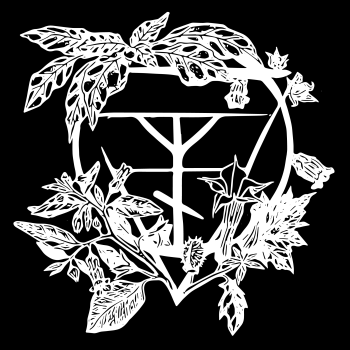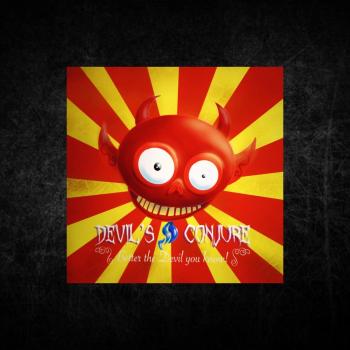Over the millennia the one who we call the Devil has taken many forms, and gone by many names. These identities have changed over time, as inspiration for his portrayal was drawn form faraway lands. In watching the documentary, The Devil We Know, we get an in depth look at the devil’s identity. In the Book of Job, Satan, as he is identified becomes personified as “the tempter, not necessarily a rival but fulfilling a role for God.” He is also the Light bringer, delivering divine enlightenment to humanity so that they might understand the true nature of the Universe. He is the one, who brought the sacred flame down from Mount Olympus and was punished for doing so, that we might be different from the animals that walk the earth. It isn’t until the Revelation of Saint John that “the devil really gets his personification as the Great Beast according to the documentary. The documentary goes on through the early years to the middle Ages when the devil becomes “the personification of evil in the middle ages.” It is during this time we learn that he takes on “animalistic, monstrous forms based on traits from Pagan deities.” The Devil’s identity is proliferated through multiple means, orally, through artwork, poetry and the writing of the time. One of the most influential texts is Dante’s Divine Comedy, this famous epic completely destroys and eliminates, “any previous angelic associations he may have had.” It is now after all of these changes influenced by religion, politics, and popular culture we are left with the current image of the Devil as Satan the Adversary.. The Church teaches that Satan’s power actually comes from God, he rules with God’s authority. The Devil’s domain is of course Hell and the surface of the Earth. “Hell is a metaphor, meaning life without any presence of God.” (Hell:The Devil’s Domain) Lucifer, when he fell brought down a third of the angels in Heaven and a third of the stars in the skies. The Devil is portrayed as the antithesis of God. In this sense he is God’s opposite and His equal. Lucifer new that he was just as powerful as God when it came to ruling. It was this pride that caused Lucifer to rebel and turn away from God. The video tells us that, “Lucifer wanted to ascend to the throne of God.” And he had the support of many of the watcher angels, “Lucifer fought God’s armies and Michael the archangel.” (Hell:The Devil’s Domain) The authenticity of the Devil as he is known to modern society is questionable. Over the centuries multiple sources from different backgrounds have contributed ideas about Satan, Lucifer, and the Devil. It is important to look at the very first mentions of the Devil and those that came before him. In, Hell: The Devil’s Dominion, we learn that Satan shares his red color with “Seth, the Egyptian God of the Underworld described as a ‘crimson god.” There is also foreshadowing in the Pagan god Pan, the horned god of the wild whose horns were likely demonized, as he was a wild god of sexual desire. According to the video, “biblical conceptions of Hell and the devil evolve over the course of the Bible.” In The Devil We Know, we find out that the popular notion of Satan is not in the Bible. This brings his current identities authenticity into question. Is he really just an amalgam of all the nightmarish taboos people did not want to face? It is surprising to find out that the Serpent in Genesis is not the Devil we know, and according to the documentary the Serpent has no real connection with Satan. It isn’t until the book of Job that we learn that Satan becomes personified as a tempter; here we see the first hints of Satan as a Rival. By the New Testament Satan goes from “serving a necessary purpose for God” to the Devil of the present “Drunk on the Blood of Saints.” (The Devil We Know) The fact that the Devil changes so much from source to source is enough to wonder if the Devil of today is the same entity of early Christianity. The documentary, The Devil We Know: An Objective Look at the Prince of Darkness, raises an interesting point about gender. According to the documentary if “the Devil took human form he would be attractive, eloquent, and charismatic.” The portrayal of the Christian Devil as male has always gone unquestioned, but why is the devil male? The Devil is the rule of his domain, during the early years of Christianity it was likely women couldn’t own property; they were not seen as powerful. The Devil is always portrayed as male because of the patriarchy of the Church. The Devil is also too powerful to be able to be a female, and a female devil would not be seen as worthy of being an adversary of God. Another example of this is Lucifer’s desire to ascend to the throne of God. The idea of such being accomplished by a female demon would not pose such a threat to a society that put women at the low end of the social scale. A female Devil would not be as threatening, and because of this he is portrayed as a male. Even when he is in a bestial form he is depicted as masculine.
















